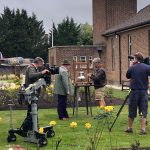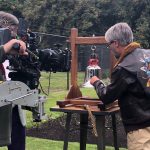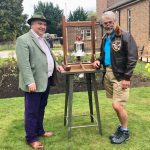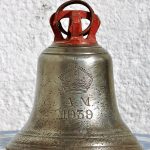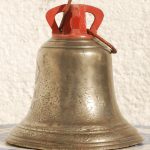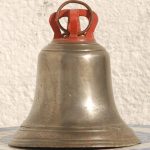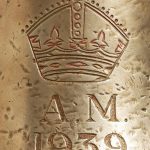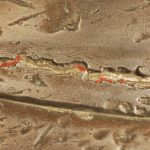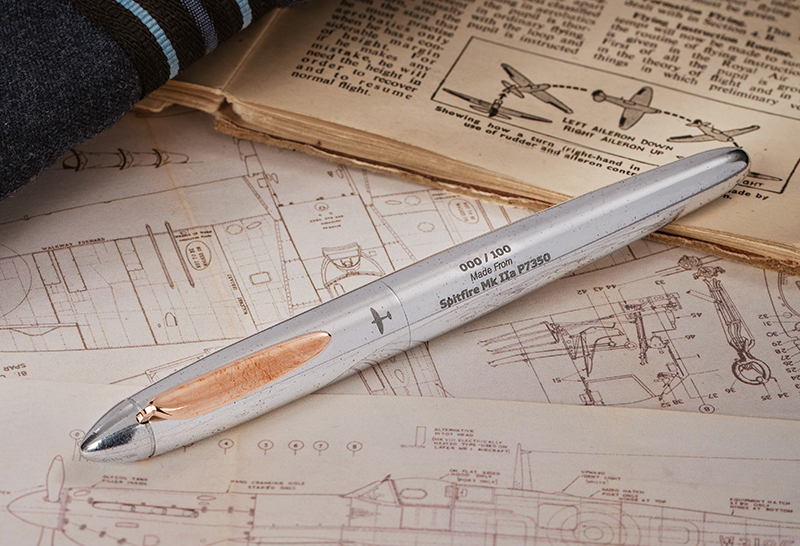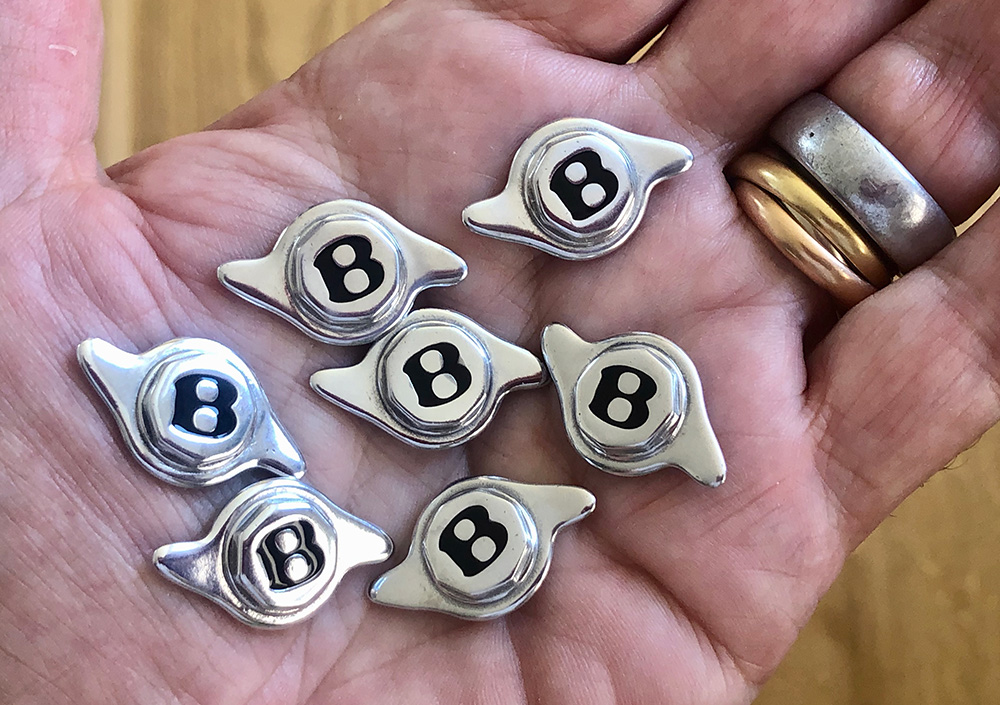My Poor Old Battered 1939 Scramble Bell!
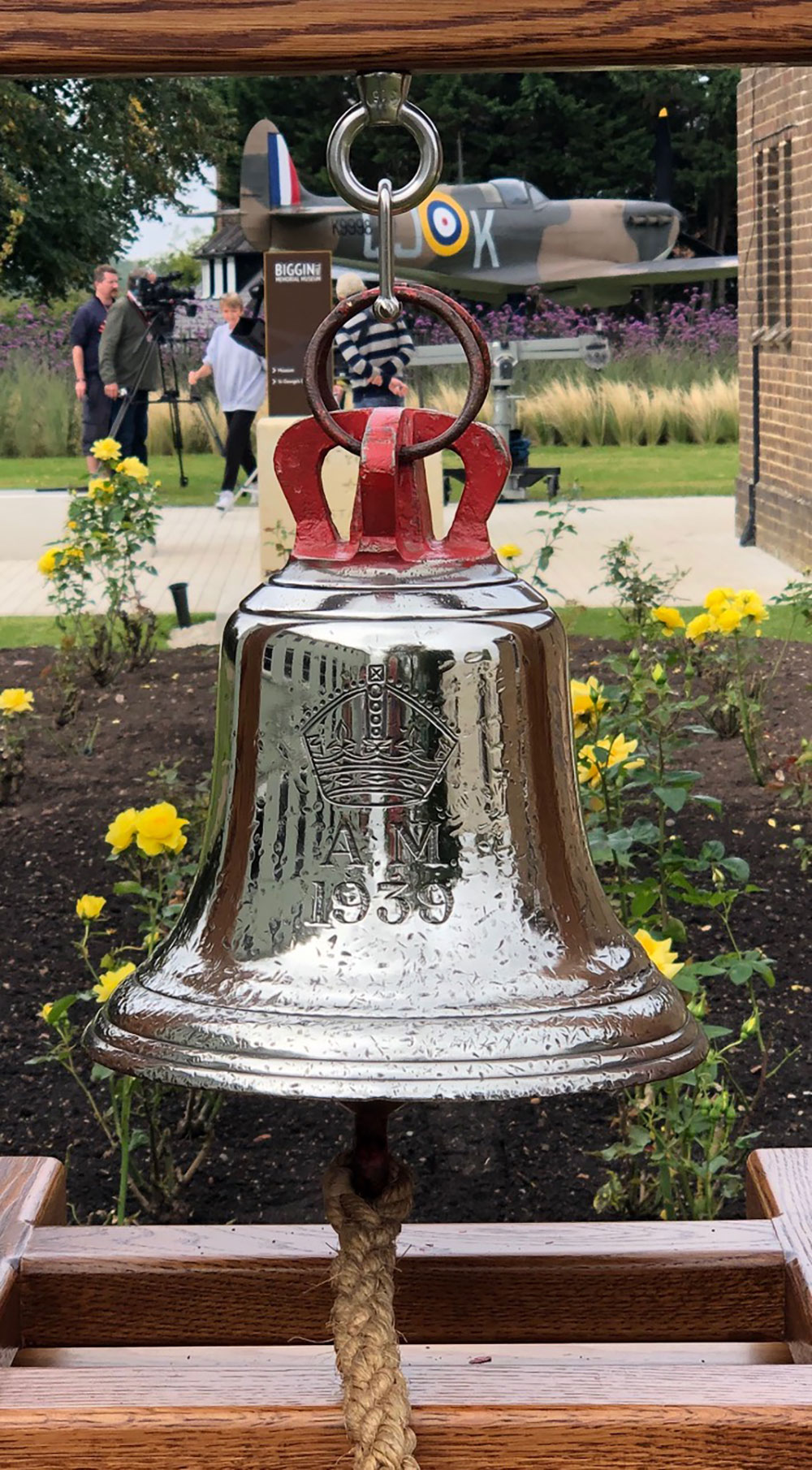
Not really news, but recently I (Chris Bennett) was filmed for a future episode of Antiques Roadshow. They are doing a special programme to mark the 80th Anniversary of the Battle of Britain for airing next year and put out a call for interesting artefacts. When I mentioned my poor old battered 1939 scramble bell from the iconic RAF fighter station Biggin Hill they jumped at it, appropriately also where the programme was filmed.
RAF Biggin Hill was the most famous of all Fighter Command’s Battle of Britain stations, largely because of its proximity to London and as it was on the German Luftwaffe’s path there. It was from Biggin during Britain’s darkest, yet finest, hour that young pilots flew relentlessly between July and October 1940, in one of the most vital periods of World War Two – a period that later was to become known as the Battle of Britain.
The summer of 1940 was sunny and hot for the pilots of Fighter Command, who were outnumbered facing the Luftwaffe’s daily bombing raids. At the start of the Battle, Biggin Hill Sector formed part of the Royal Air Force’s No. 11 Group of Fighter Command, its proximity to London ensuring it was the busiest of all Fighter Command stations, with unrelenting “trade”. Aware of its significance, Biggin was a prime target of the Luftwaffe bombers and during 1940 the airfield was directly attacked on many occasions, most notably on the 18th, 30th, 31st August and 1st September, these attacks causing considerable destruction to buildings and runways, as well as many casualties.
The RAF’s fighter squadrons each had their own forward dispersal hut situated away from the airfield main buildings. The dispersal was used by the pilots to relax and perhaps catch up on lost sleep (most were exhausted from the numerous sorties during the day and revelry in the evening) whilst waiting for the telephone to ring announcing a “scramble” to meet yet another raid. Squadron aircraft would be parked nearby and when the call came to scramble the ground crew also needed to be alerted, as they had to be at the aircraft by the time the pilots arrived to help strap them into cockpits and start the Spitfire and Hurricane’s Merlin engines. And time was very much of the essence. To notify the ground crew a suitably loud bell was often hung at the dispersal hut. Other bells placed at locations such as the station headquarters, guard house and hangars would be rung in cases of general alarms and air raids.
This bell (one of a number I have, a couple of which are for sale) is engraved with the cipher of George V and dated 1939, and would’ve been hung on the exterior of one of the main buildings at Biggin Hill from 1939, and during 1940 and for much of the rest of the war would’ve been tolled regularly to scramble fighters and in response to the numerous enemy attacks upon the airfield.
At some stage many, many years ago the bell was painted red and traces still exist upon it. There’s a large horizontal 6” crack to the side, which in effect makes the bell useless as such, as it no longer rings. The crack, which is very old, has traces of filer with fragments of red paint over it, meaning the crack must’ve been there before being painted when the bell was in RAF use. Such a crack can only have been caused by a massive trauma and its intriguing to think such occurred during one of the many raids on Biggin Hill in late August and early September 1940, when the base was virtually destroyed by the Luftwaffe.
The bell was discovered many years ago covered in brambles and nettles at the bottom of a garden during clearance work between Keston and Farnborough, Kent, just a short distance from Biggin Hill. Whilst we will never know how it got there, the bell undoubtedly originated from RAF Biggin Hill, where it would’ve been rung during that fateful summer of 1940.
Having lost its removable clapper the bell was rung by hitting with a hard implement, resulting in a multitude of bruises all around it. It’s by far the worst conditioned bell in my collection but is also my favourite, the knocks and huge intriguing crack making it shine above the rest!

